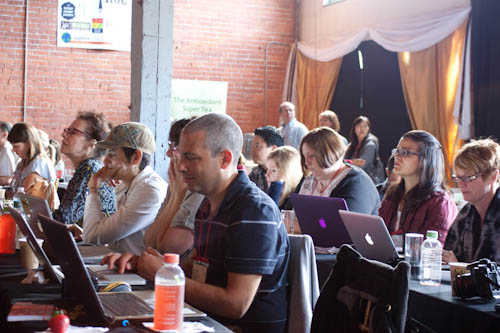
Dianne Jacob, Kristine Kidd, Amy Sherman
The first panel at the International Food Blogger Conference (IFBC) this past weekend in Seattle dealt with writing a great recipe, paying for content, and taking your work as a food blogger to the next level. Dianne Jacob, author of Will Write for Food, sat alongside writer and recipe developer, Amy Sherman (BAB blogger) and cookbook author and former food editor of Bon Appetit Kristine Kidd. Each speaker brought their own unique experiences in writing and recipe development, kicking off the session by discussing the importance of being generous and giving proper credit when adapting a recipe. Amy Sherman also urged bloggers and writers not to give recipes away for free. It can be flattering for beginning bloggers to be approached by online sites of print publications requesting to use a recipe. But Sherman noted that this only complicates things for folks trying to make a living by writing and developing recipes. While there were great tips on how to approach editors with recipes and how to take recipe development to the next level, the heart of the panel discussion was based around writing a great recipe. Below you'll find some of the highlights:
Elements of a Recipe
Jacob, Sherman and Kidd discussed the four main elements that make up a recipe--each should be carefully considered to engage your reader, and achieve continuity and clarity:
1) Title: Keep your title straightforward, tempting, descriptive and fun. After all, it's the first thing your reader will see.
2) Headnotes: The headnote of a recipe is the information right after the title and before the ingredient list. It's important here to tempt your readers, give them either sensual or helpful information (or both!), perhaps some cultural or historical tidbits regarding the recipe or a personal story. Kidd discussed the importance of the headnote as an invitation for your readers--make them curious about your food. The headnote is the "why" of the recipe: out of all of the gazpacho recipes in the world, why are readers going to want to make yours?

